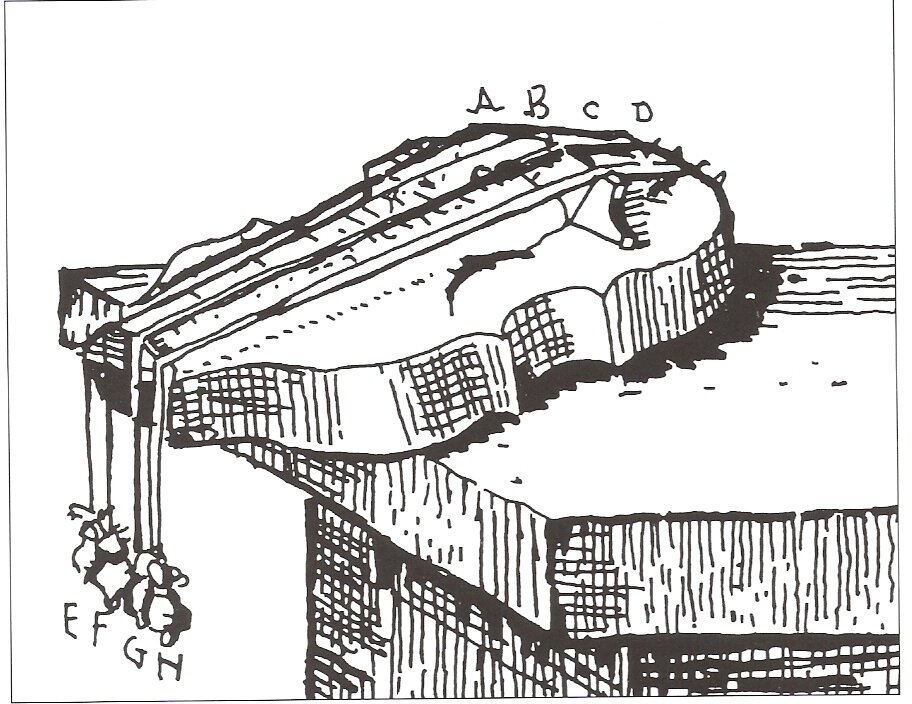With Strings Attached
Recent research into historical strings
Renaissance, Baroque, Classic
Sources for equal tension stringing

Serafino di Colco - 1690: "The strings are adjusted to the violin as seen in the illustration a.b.c.d. are stretched and pulled by equal weights, e.f.g.h. If, touching them or playing them with the bow, they form a perfectly tuned violin, they are perfectly proportioned, otherwise, one must change them as many times, until the tuning remains in fifrhs, two by two , which is exactly the tuning of the violin"
John Dowland - 1610: "These double-basses likewise must neither be stretched too hard, nor too weake, but that they may according to your feeling in striking with your thombe and finger equally counterpoise the trebles"
Marin Mersenne - 1636: "the strings will be perfectly proportioned among themselves when they follow the ratios of said notes." "That is to say, that the decrease in thickness follows the ratio of the harmonic intervals, if one wishes the instrument to have a perfect harmony."
Thomas Mace - 1676: "Another General Observation must be this, which indeed is the chiefest, that what size lute soever, you are to string, you must so suit your strings, as (in the tuning you intend to set it at), the strings may all stand at a proportionable and even stiffness."
(this page is in the making: more later)
updated 18.05.2008